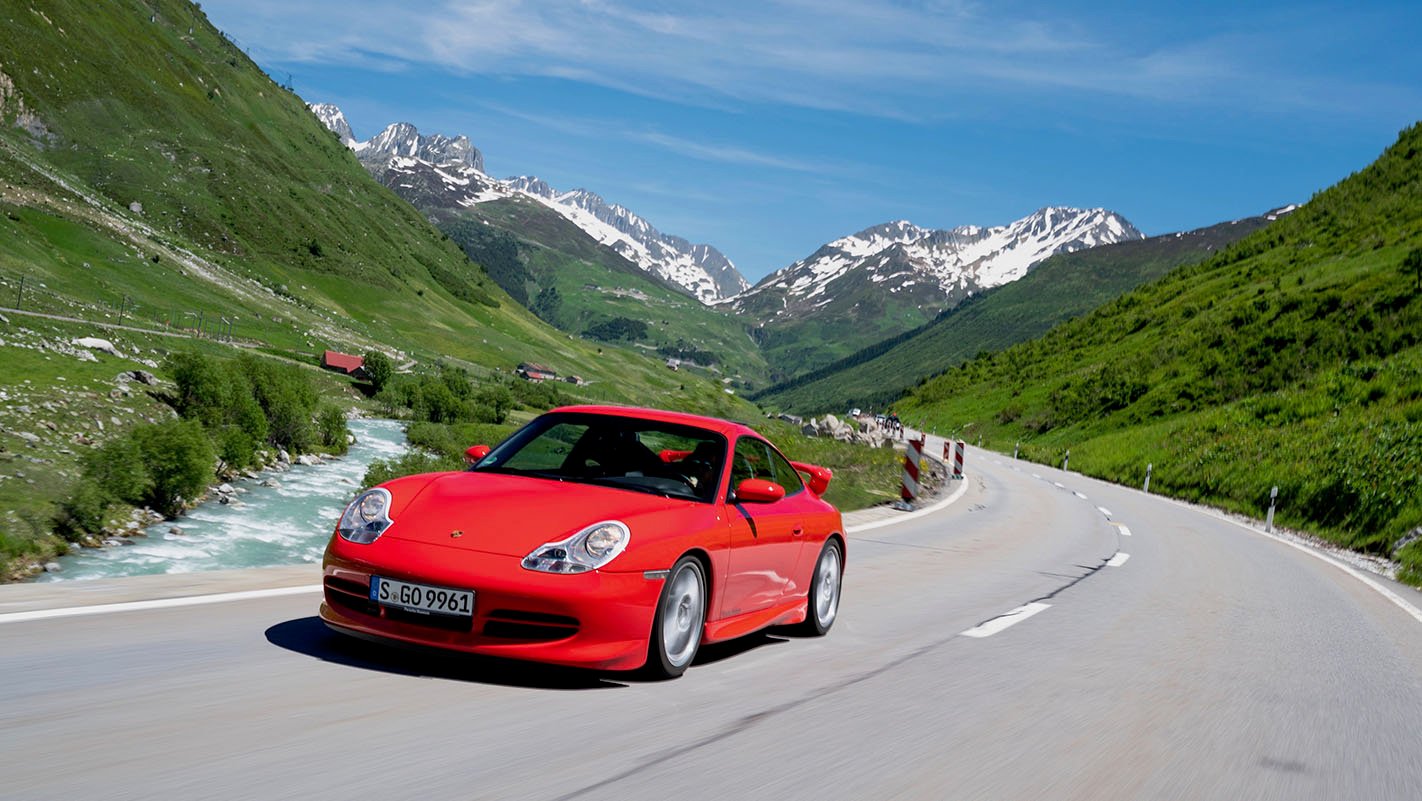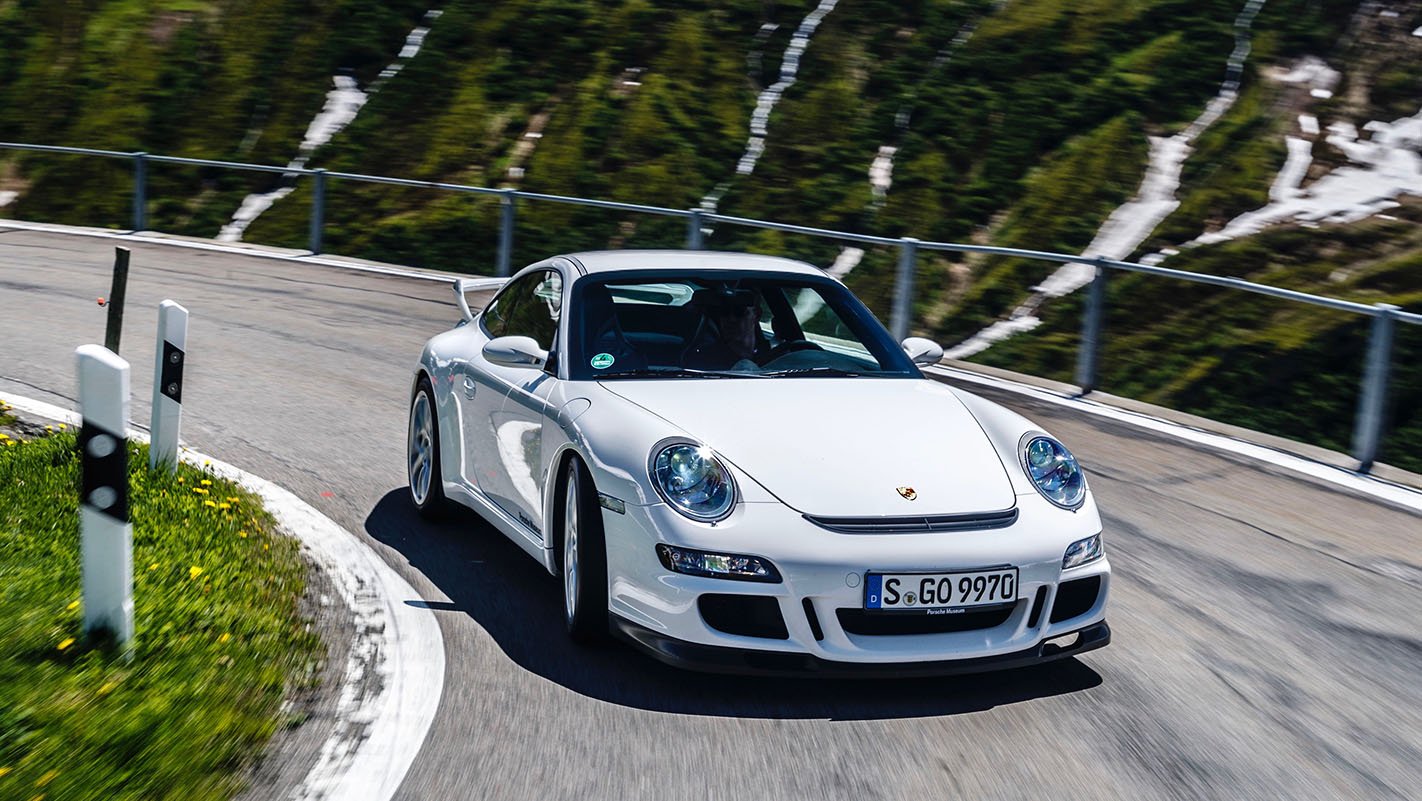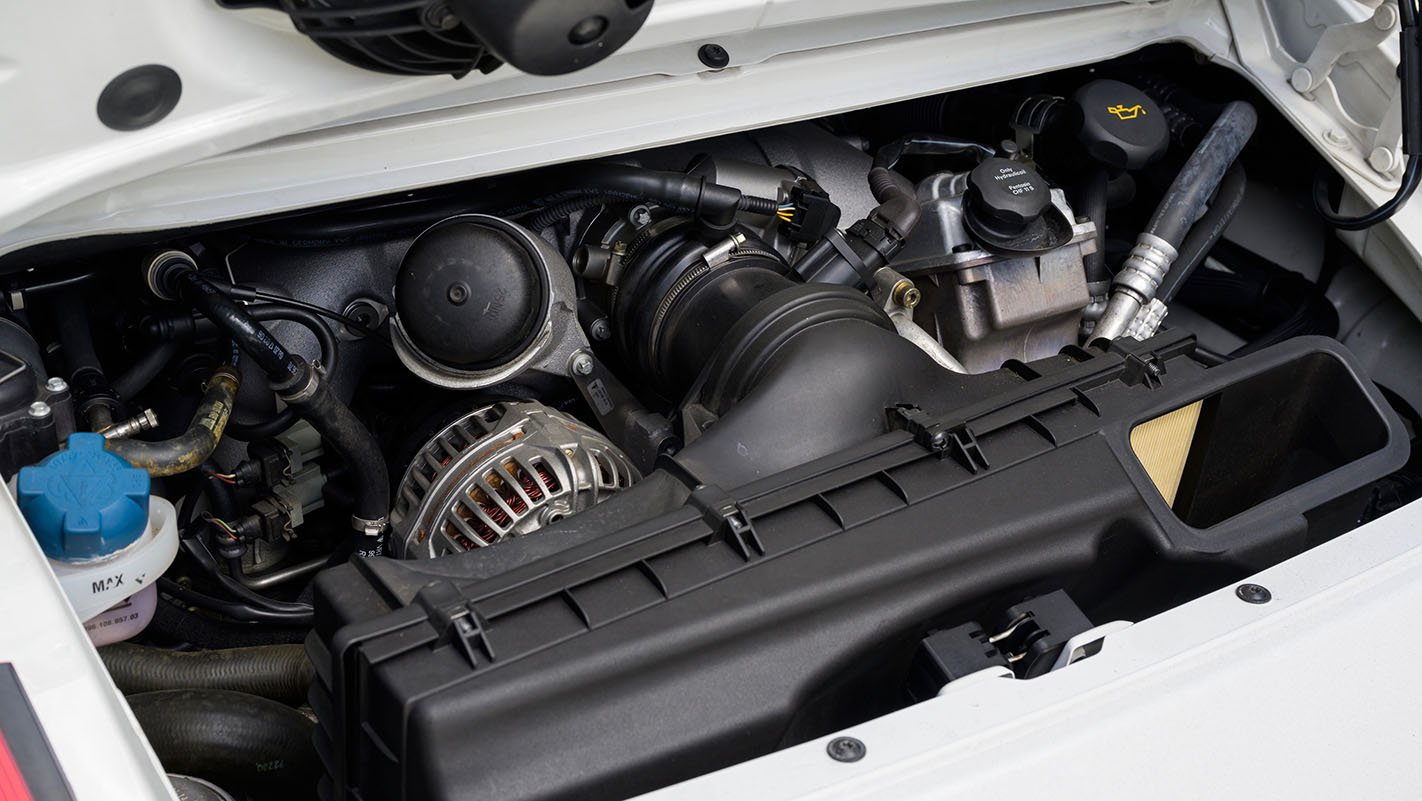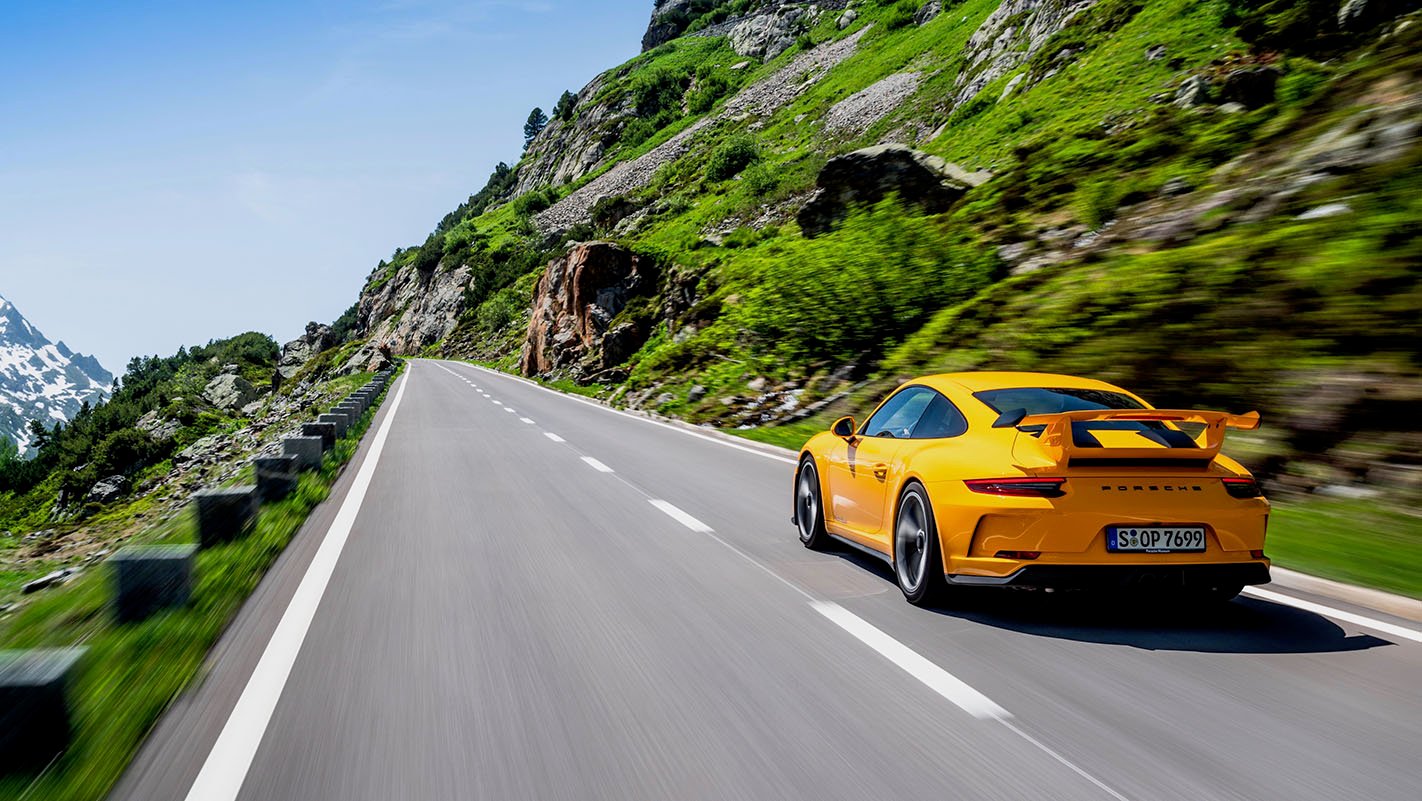With the reveal of the all-new 992-generation 911 GT3, one of Porsche’s most iconic nameplates enters its fourth generation.
To understand what makes the naturally-aspirated motorsport-inspired model line so iconic, we’re looking back at the first three generations, going under the skin, and looking at what made them great (and some not-so).
It all started at the end of the millennium when the 996 GT3, co-developed by Walter Rohrl no less, was revealed at the 1999 Geneva Motor Show.
996: AN ORIGINAL WORTHY OF GREATNESS

Is the first 911 GT3 the purest of them all?
Given that that new 992 GT3 will cost in the region of $370,000 and, if your name isn’t on the list already, you may well have a very long wait, we’ve compiled a primer of used GT3 alternatives, in chronological order.
While the 996 may have been the first GT3-badged road car out of Zuffenhausen (none of the production models were ever actually built out of the Weissach plant), the idea of a lithe, naturally aspirated 911 that was at home on road and track wasn’t new. Cars like the 1972/73 Carrera RS 2.7, the 964 Carrera RS from 1991 and the 992 Carrera RS of 1995 set a template that the GT3 subtly refined.
At its heart is the water-cooled M96/72 ‘Mezger’ engine, which can trace a bloodline back to the 911 GT1 homologation special of 1996. Cranking out 265kW, the GT3 was the star of Porsche’s stand at Geneva in 1999, deploying that power to the rear treads with no stability control fitment. That only arrived with the 997, making the 996 in many ways the purest of all GT3s.
Purity is relative. While the early GT3 could trace its DNA to La Sarthe, the inconvenient truth is that because of its bulletproof engine and weighty G96/90 manual gearbox, it actually weighed 30kg more than a base Carrera. And that organic swoop of a rear wing was largely decorative, Porsche claiming that even at the car’s 302km/h v-max, it contributed to ‘near zero’ lift.

There’s no doubting the specific output of 100bhp (74.6kW) per litre though, which represented a high bar for atmo engines at the turn of the century. The 996 GT3 was offered in two distinct iterations, known as the Mk1 and the Mk2. The Mk1, with is curvaceous rear wing, was produced between August 1999 and July 2000, while the Mk2, easily recognised by its angular headlamps and flat-plane rear wing, being built between August 2003 and July 2004. A total of 1858 Mk1s were built, including 2589 Mk2 models, with only 164 being officially imported to Oz. Porsche also made the lighter and stiffly suspended GT3 RS between 2003 and 2005; officially 284kW but actually 298kW on the dyno.
In truth, the Mk2 is a materiallysuperior car, rectifying many of the Mk1’s shortcomings. Its brakes were stronger and the engine had more at the top end. With power lifting from 265 to 279kW, and each car consistently making that figure, the Mk2 also feels torquier and shifts more cleanly. It brought the option of factory carbon-ceramic brakes and it also carried over the stronger steel synchro rings from the late Mk1 models, early cars suffering a gearshift action that could get a bit soft.
Whichever 996 GT3 you choose, it’s a tough car, mechanically at least. Check for accident damage and make sure you’re looking at a GT3 and not a kitted Carrera. The Mezger engine isn’t afflicted by the notorious rear-main seal issue of the 996 Carrera, but front main seals can leak. The gearboxes are mainly unburstable, although those shift issues on early 996s can be traced to weak synchro rings, a $4000 job that will probably have been carried out on all but low-mileage cars. Rear struts and drop links are key inspection items if the 996 doesn’t feel as sharp as it should.
If anything, the 996 GT3 is more special now than it was when it first appeared. It was launched into a tiny temporal window where an old-school approach to driver assistance met with a modern-feeling engine and tyre combination. We just didn’t know it at the time. With hindsight it’s easy to see why the original more than deserves its place in Porsche’s canon of greats.
FAST FACT
Porsche 911 996 GT3 buyers chose between Comfort and Clubsport specs, the latter featuring a half cage behind the front seats, a fire extinguisher, flame-retardant bucket seats and, in the Mk1, a single-mass flywheel. It also did without side airbags. Australia took 77 Mk1 Clubsports and 13 Mk1 Touring models.

PORSCHE 996.1 GT3 SPECS
Engine: 3600cc flat-six, DOHC, 24v
Max Power: 265kW @ 7200rpm
Max Torque: 370Nm @ 5000rpm
Transmission: 6-speed manual
Weight: 1350kg
0-100km/h: 4.8sc (claimed)
Price: $224,900 (1999), from $170,000 (now)
The good: Brilliant Mezger flat-six; adjustable handling; no stability control or flappy paddles; effervescent hydraulic power steering
The bad: Relatively thin on the ground in Australia; front splitter is a consumable item; 996’s interior finish hasn’t aged well
997: ALL HAIL THE MIGHTY MEZGER

The end of an era produced an epic crowning glory
Although porsche purists cite the 993 as the last of a particular bloodline, namely that of the air-cooled 911s, in certain regards the 997 GT3 also marked a profound changing of the ways. In effect an evolution of the 996, the 997 returned a purity of form to the iconic sports coupe, so much of which had been lost in the 996’s headlong, and understandable, desire to break tradition.
This generation GT3 would see the last outing for the legendary Mezger engine and, though we didn’t know it at the time, it would also be the last Porsche 911 GT3 for a while with a manual gearbox. There were firsts, too. This was the first GT3 to feature PASM (Porsche Active Suspension Management) adaptive dampers, affording the 997 a more polyvalent personality. Also new were the centre exit exhaust pipes that contorted up to the 305kW powerplant via a set of silencing flaps that flicked open at 4000rpm. From there to its 8400rpm redline, the 997 GT3 delivered a generous playground.
Porsche has long had a history of what can most charitably be described as mechanical repurposing, and the 997 GT3 ran on the guts of a Carrera 4, with the front-drive mechanicals ditched in favour of a larger 90-litre fuel tank, although our right-hand drive versions suffered a packaging compromise and had to make do with the C4’s 67-litre tanks, along with the cutouts for front diff and driveshafts.
Like the 996 that came before it, the 997 was offered in two distinct generations often dubbed 997.1 and the 997.2. The GT3 first appeared in February 2006, and virtually all of its performance metrics were superior to the old 996 GT3 RS. The 997.1 GT3 RS was subsequently unveiled in October of that year, cutting weight by 20kg, adding 64mm to the rear width although power and torque (405Nm) were unchanged. The RS was a popular choice, accounting for almost a third of all 997.1 GT3 sales.

The 997.2 of 2009 saw the Mezger flat-six gain another 197 cubic centimetres of swept capacity and, for the first time, the RS version also differentiated itself with higher outputs, with 331kW versus 320 for the GT3. The swansong for this model was the 600-unit run of the 911 GT3 RS 4.0 in 2011. This model remains probably the most collectable of all modern 911s, featuring the final Mezger engine iteration of 3996cc and 368kW/460Nm.
Evidence of the GT3 range’s popularity came via production numbers. Where 996 GT3 variants shifted 4863 units across five years, the 997 GT3 models, which were in market for just two years, found over 8300 owners.
Prices in Australia start at around $230,000, so it’s worth bringing a specialist or having the car given the once over by a Porsche dealer. They’ll be able to run diagnostic software that will tell you whether the engine has been subject to over-revs and will also be able to generate metrics of how long the car’s been at or near redline.
The 997 GT3 is renowned as a tough vehicle mechanically, but there are a few quirks. The front-mounted radiators are susceptible to damage from road detritus, so make sure they’re not damaged or corroded. You should also pay particular attention to the exhaust system, as a replacement is around $6K. If you’re thinking of using the car for regular track use, steer clear of the PCCB brake option, as heavy use can cause premature wear and the replacement costs are eye-watering. White or blue smoke upon cold start is a regular occurrence. If it persists when the engine has warmed, then it could be something a little more sinister.
FAST FACT
The 997’s interior materials are a good deal more hardwearing than the 996, although Alcantara bits might well need a retrim. Also ensure that you fit into the notoriously narrow fixed-back carbon bucket seats if they’ve been specified. These are basically Carrera GT seats and sit very low but also quite upright. Try before you buy, as some find them extremely uncomfortable.

PORSCHE 997 GT3 SPECS
Engine: 3600cc flat-six, DOHC, 24v
Max Power: 305kW @ 7600rpm
Max Torque: 405Nm @ 5500rpm
Transmission: 6-speed manual
Weight: 1395kg
0-100km/h: 4.3sc (claimed)
Price: $250,000 (2006), from $230,000 (now)
The good: Wieldy and chuckable size; Mezger engine is as tough as old boot leather; RS 4.0 one of the most desirable 911s ever; residuals holding up well
The bad: Interior starting to feel its age now; power output eclipsed by today’s Boxster and Cayman models; small fuel tank means modest range
991: CONTROVERSIAL BRILLIANCE

After a rocky start, the 991 generation proves its worth
All good story arcs need ups and downs. Prior to the introduction of the 991 GT3 at the Geneva motor show in 2013, the GT3 story had been consistently rosy. The 991 looked to continue that trajectory. It debuted an all-new 3.8-litre direct injection engine that developed a monster 355kW at a heady 8250rpm, featured rear steer, Porsche torque vectoring plus and titanium conrods. However, it was what that engine was connected to that initially caused a lot of consternation.
There was no manual GT3. Andreas Preuninger was adamant that the development path was clear. “A manual will not only be slower in acceleration but the car will also be less capable in cornering because we cannot combine the electronic diff with a manual, because there’s no hydraulic pump in the manual to feed the e-diff,” he noted.
Internet forums went berserk, but the facts were that the PDK-equipped 991 GT3 was hugely popular, shifting 6300 units in the three years it was on sale. But there were problems. Engine fires brought about by the failure of conrod bolts saw the first 785 GT3s recalled and fitted with new engines. Porsche also had an issue with the reliability of certain batches of valve train rocker arms on early 991 GT3s, with the company pledging to cover the costs of engine failures brought about by this issue.
A 4.0-litre powerplant was introduced into the 2014 GT3 RS, good for 370kW/469Nm. This model also debuted features like a magnesium roof, a pit lane speed limiter, and the ability to ‘paddle neutral’. This engine also found its way into the 911R, in effect a lightweight GT3 RS that saw the return of the manual. Only 25 made it here and speculators started a frenzy, with delivery mileage cars advertised at well over $1m.

By 2017, the GT3 had morphed into its 991.2 guise, co-opting the 4.0-litre engine. Changes included adding ram air ducts, reducing the engine’s internal friction and increasing downforce. The manual returned and Porsche even offered a ‘Touring’ package, whereby you could buy a de-winged three-pedal version. Aside from the retractable rear spoiler from the Carrera GTS, the Touring also had a subtly different soundtrack, courtesy of different air filters.
The final hurrah came in February 2018, when Porsche launched the 382kW/470Nm 991.2 GT3 RS. This featured a 9000rpm redline, NACA ducts to cool the brakes, lightweight glass, aggressive rubber and rose-jointed suspension links. An even more focused Weissach package was also offered.
Despite initially having its reputation slightly tarnished by engine reliability issues, the 991 GT3 was a massive seller. More than 25,000 were produced across all versions and it’s perhaps this popularity which have seen used prices, for standard GT3 models at least, remain relatively sensible. Entry level is around the same price as a seven-year-older 997 GT3. Clearly much depends on whether three pedals are a non-negotiable, as for later manual 991.2 cars you’ll need to spend over $300,000.
A bigger, more sophisticated car than the 997, it’s tempting to think the GT3 lost some of its bite with the 991, but that’s anything but the case. It’s massively more capable. Drive them back to back and the 997 feels two generations older and a 996 feels positively antediluvian.
With prices hovering just over $200k for early PDK 991s, it makes a great half-price alternative to a new 992 GT3. The teething issues that afflicted early 991 GT3s are long since rectified, and there’s no shortage of choice, so take your time to find the right car. Do that and you’ll realise the 992 has some big boots to fill.
FAST FACT
991 GT3 The used market for 991 GT3 has held up fairly well, with typical first year depreciation standing at just 5 per cent. After that the GT3 tracks the same depreciation curve of the 991 Carrera S. Interestingly, due to abundant supply, the 991 GT3 is the most price sensitive of all the GT3 generations to higher mileages, ironic given that there’s even a Touring model available.

PORSCHE 991.2 GT3 SPECS
Engine: 3966cc flat-six, DOHC, 24v
Max Power: 368kW @ 8250rpm
Max Torque: 460Nm @ 6000rpm
Transmission: 7-speed PDK (6-speed man)
Weight: 1430kg (dual-clutch)
0-100km/h: 3.4sec (claimed)
Price: $327,100 (2017), from $300,000 (now)
The good: Mader engine is a screamer, too; interiors feel more spacious and modern; more choice around transmissions and trims; low-key Touring version is a gem
The bad: Early engine reliability issues; price speculation on 911R; no manual option on 991.1 GT3; not the most exclusive generation of GT3; no PDK for Touring







